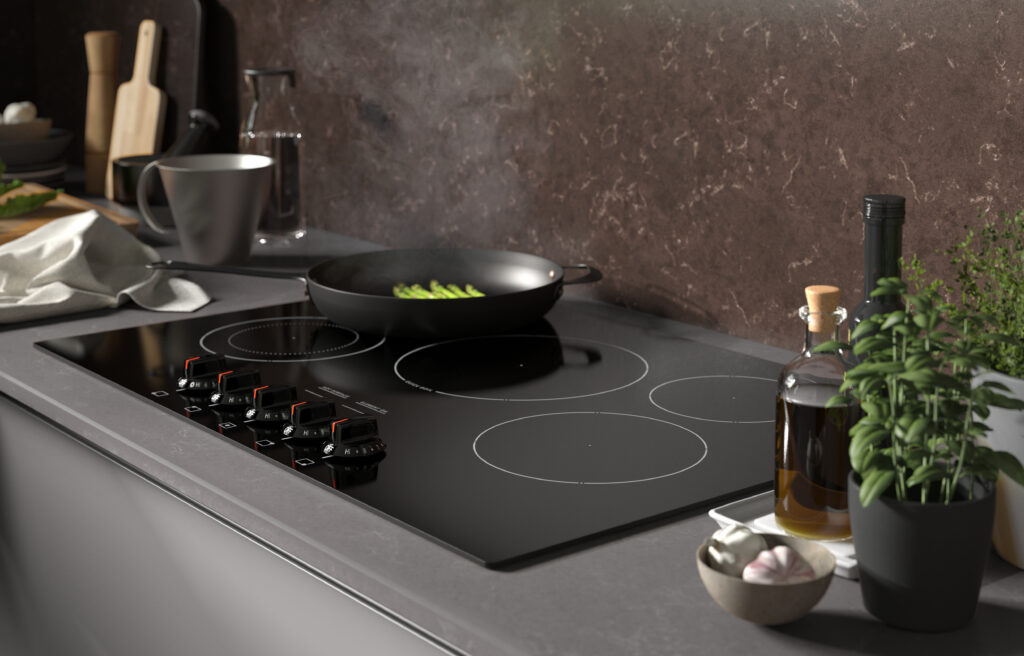
Induction cooking is gaining popularity for its efficiency and precision. Experts share essential tips to help home cooks transition from traditional gas or electric stoves to induction cooktops. Understanding the nuances of induction cooking can enhance your culinary experience and improve your cooking results.
Choosing the Right Cookware
When adopting induction cooking, the first step is selecting the correct cookware. According to Chris Demaillet, owner of Montclair Chef, only certain types of pots and pans are compatible with induction cooktops. Cookware must be made from magnetic stainless steel or cast iron for effective heat transfer.
To verify compatibility, Demaillet recommends the magnet test: if a magnet sticks to the bottom of your cookware, it is suitable for induction use. Be cautious when purchasing online, as not all cookware is clearly labeled for induction compatibility.
Understanding Coil Size
Unlike traditional stoves, induction cooktops have hidden magnetic coils that transfer heat directly to the cookware. Tung Vu, a chef-instructor at the Institute of Culinary Education, highlights that the size of these coils can vary. A smaller magnet may not effectively heat larger pans, leading to uneven cooking.
Vu advises checking the specifications of your induction cooktop to ensure that the diameter of the magnet is suitable for the largest pan you intend to use, ideally around eight inches. This knowledge can significantly improve cooking outcomes, particularly when using larger pots or pans.
Rapid Heating and Cooking Strategies
One of the standout features of induction cooking is its speed. Demaillet notes, “Induction heats much quicker than gas or traditional electric.” This rapid heating is beneficial for searing meats but requires attentiveness to prevent burning. He suggests starting at medium to high heat before switching to “boost” settings for searing.
Vu echoes this sentiment, recommending a gradual heat-up process. He explains that preheating a pan slowly helps achieve even temperatures, which is crucial for cooking proteins properly. Mike Williams, Vice President of Sales and Marketing at Kenyon, emphasizes that induction cooktops can boil water in one-third of the time compared to radiant electric cooktops, underscoring their efficiency.
Maximizing the Boost Function
Induction cooktops often feature a boost function that allows for quick surges of power. Williams describes this feature as useful for rapidly bringing water to a boil or intensifying heat for searing meat. However, he cautions against prolonged use of this function, as it can damage both the cooktop and cookware.
Using the boost function should be approached with care. It is designed for short bursts of extra power, rather than as a continuous setting, to ensure optimal performance and prevent damage.
Careful Handling and Maintenance
Induction cooktops require different handling than their gas or electric counterparts. Vu advises against dragging pans across the glass surface, as this can lead to scratches or even shattering. Instead, lift the pan completely off the cooktop during cooking motions to maintain the integrity of the surface.
Cleaning spills promptly is another crucial maintenance tip. Williams suggests that sugary spills can etch or pit the cooktop surface if left unattended. Regular cleaning not only preserves the cooktop’s appearance but also ensures efficient operation.
Heating Cookware Properly
Another common mistake is placing empty cookware on high heat. Williams warns that this practice can damage the cookware due to the rapid heating capabilities of induction cooktops. It is advisable to start on a lower setting and gradually increase the heat once ingredients are added.
By following these expert tips, home cooks can successfully navigate the transition to induction cooking. With the right approach and understanding, induction cooking can offer a fast, efficient, and enjoyable culinary experience.







